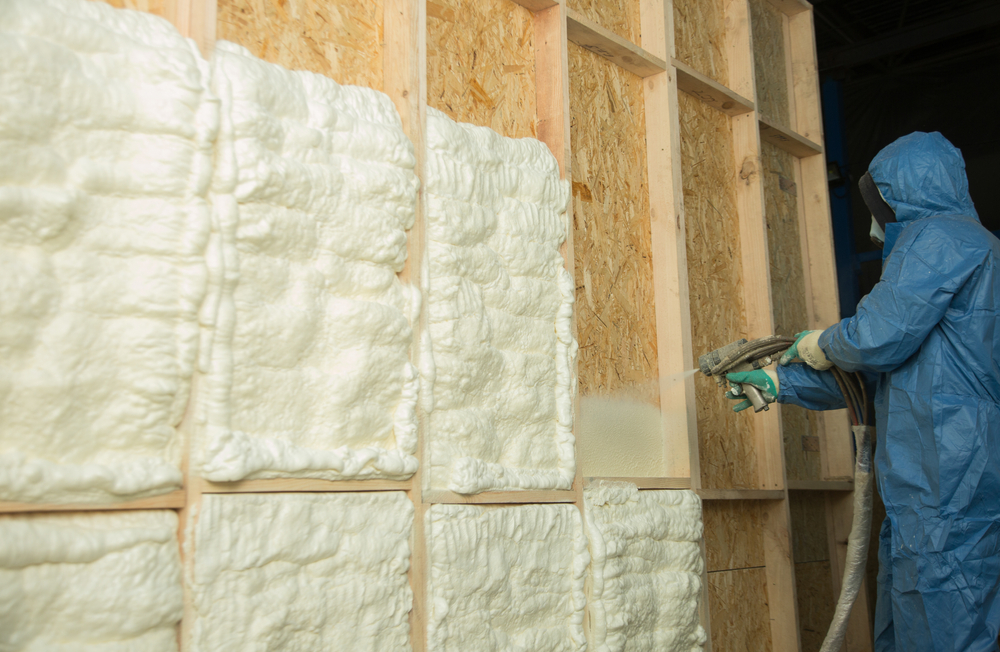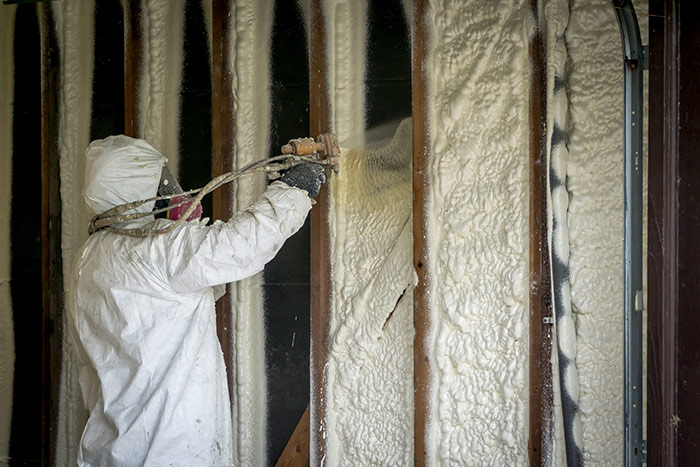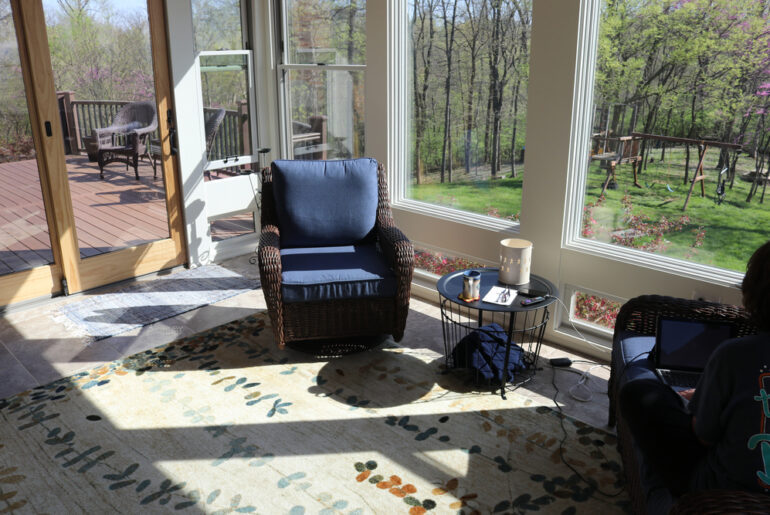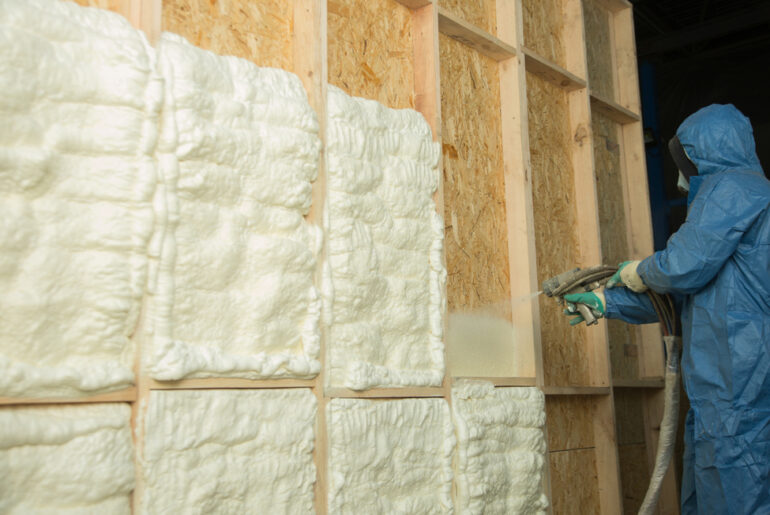Spray foam insulation is a great choice for many retrofit situations, but what if you are building a new house? Is spray foam the right choice in a new build?
Legislators are always revising upwards the level of insulation required in a new building. Spray foam insulation can produce an R-value of 7 with just an inch of material, so it could be a great way to meet code requirements.
You are never going to build your dream home twice, so getting it right at the planning stage is key. Will spray foam insulation fit your new build project specifications?
Here’s everything you need to know about where spray foam wins in your new build project.
Spray Foam Insulation Requires Preparation
A wise person once said that to fail to plan was to plan to fail. Installing spray foam insulation cannot be done while other trades are in the building, so it is vital that you make sure that everything that needs to be made ready before either contractor or material arrive on site, is good to go.
You or your contractor must ensure that proper ventilation, such as extract fans, are in place and that other trades, visitors or inspectors are not allowed in the building during the works or for the minimum curing period.
Pick your contractor and spray foam products carefully. Much has been said concerning the chemicals used in the production of spray foam, and the good news is that it continues to develop and improve.
The Basement and Crawl Space
As with all construction projects, the place to start is in the ground. If the project includes a basement or crawl space, spray foam will help protect your home from tiny air leaks. These leaks can cost energy dollars without you knowing it.
Closed cell spray foam is an ideal product to use on the walls of a basement or crawl space. It can be specified as a vapor barrier and installed directly onto the interior concrete or block walling. In a situation where the ground level is higher on the outside, even though there may be a requirement for land drains, closed cell spray foam can provide an added layer of protection.
Spray foam insulation most likely won’t make an appearance until long after the floor beams for the primary living area of the build have been installed. It is not UV stable, so while it might be tempting to install it while the crawl space is easily accessible, it’s not advisable.
Also, for best results spray foam needs to be installed under stable, dry conditions, so it’s wise to wait until the building has been made weathertight. Spray foam has a high up-front cost and you will want to protect that investment.
Wall Cavities
Open and closed cell spray foam insulation can both be effective products to use in wall cavities between the wall studs. The foam is sprayed directly onto the exterior sheathing, expanding to fill the space.
Closed cell spray foam is installed in multiple passes with the spray gun nozzle, from one to two inches depending upon the manufacturer’s instructions. It is important to follow these to the letter to avoid any issues with the curing process.
Open cell spray foam is usually applied in a single pass and will sometimes expand past the depth of the wall studs and need to be trimmed back flush. However, open cell has poor vapor resistance and can lead to condensation and possible water retention unless a suitable barrier is used.
You should also check the manufacturer’s recommendations regarding the product’s exposure to UV sunlight and make sure drywall arrives within the specified timeframe.
Another advantage to using closed cell spray foam in wall cavities which is worth considering, is the added structural integrity afforded by a properly applied product. Testing by international chemical giant BASF reported increases in rack and shear strength up to 300%.
It makes sense when you consider that the structural component of a sectional garage door, or an insulated warehouse external cladding panel, is simply closed cell foam. Added rigidity could provide added value if your project is in an area where high wind-loading is a serious consideration.
Vented Attics
Things can get a little complicated when you get to the top of the house, and you need to be aware of the code that is relevant for your climate zone. By far the simplest solution is to insulate the attic floor.
Spray foam insulation can be used in conjunction with loose fill if you are on a tight budget. The spray foam seals the space between the joists to create an air barrier. After curing, cellulose can be blown in on top to the required depth. If using loose fill insulation, ensure baffles are fitted to protect the eave vents.
Loose fill insulation does settle over time, reducing its R-value so make sure you follow the manufacturer’s recommendations to get the best performance.
If you have installed any recessed light fittings or fan motors into the ceiling, then you will need to fit a housing to ensure you have a proper minimum 3 inch clearance so that the fittings do not overheat.
Insulated Rafters and Cathedral Ceilings
These can be treated in the same way as stud walling when constructing an unvented roof. Apply spray foam insulation directly to the roof sheathing, ensuring the correct depth is maintained as per manufacturer’s instructions and the local climate zone.
If you are running a tight budget, then a hybrid strategy could be implemented, this time using one layer of spray foam, overlaid with fiberglass batts.
Closed cell spray foam is the better choice in an attic location, or a vaulted ceiling with exposed beams simply because it is both easier to leave the roof structure visible, and it provides a vapor barrier too. Some lenders and insurers are especially uncomfortable with open cell foam installation in an attic as it can hide structural elements as well as retain moisture.
How Much Spray Foam Insulation Will Cost For New House?
The construction industry is famously innovative and the natural home for problem solvers and engineers dedicated to improving the way things are done. Spray foam has evolved over time and many manufacturers now boast that lower levels of volatile organic compounds (VOCs) are emitted during and after the work is complete.
The smell is similar to paint fumes and is the reason ventilation and the correct respirator are required for the installation of spray foam. In the long term, a properly insulated home will require less energy to keep it comfortably habitable, and that has to be good value.
Quality Versus Quantity
The more insulation you install in a building the better, right? You might think so, but what really matters is how well the job is done. There is a limit to the R-value a build can aspire to, which is commonly regulated by the method of construction.
For example, to calculate the R-value of a timber stud wall, the timber studs must form part of the equation, normally 25%. After two passes with the closed cell spray gun, there is little benefit from making a third pass.
Raising Standards
What can make the difference is the level of expertise displayed by the installer. Home Energy Ratings inspectors (HERS) use a grading system. Grade one installation allows only minor gaps or compression of fill products up to 2% across the entire structure.
Grade two demands no more than 2% of the insulation installation missing and 10% compression. Grade three is 5% and a poor fail. Neither grade two, nor three comply with the National Green Building Standards (2015).
Added Value
We all want to make the most of our investment. Building a house takes a good deal of both time and money, so is spray foam insulation really worthwhile?
It may be, on average, twice the cost of a mineral fiber product such as rockwool, and at least four times pricier than fiberglass, but it does not come with the same downsides and as an insulator, closed cell spray foam easily outperforms all-comers.
Is It Wise to Economize?
You could economize by using a hybrid insulation design, but the added installation costs might outweigh any savings made. In the long term, the energy efficiencies delivered by spray foam will pay for themselves, especially when the durability of the product is taken into consideration.
Unlike blown-in loose-fill insulation spray foam does not settle over time. Its R-value should remain unchanged over the lifetime of the building into which it is installed. While fiberglass might suffer from compression or water retention, thereby reducing its lifespan and R-value, the same is not true for closed cell spray foam.





